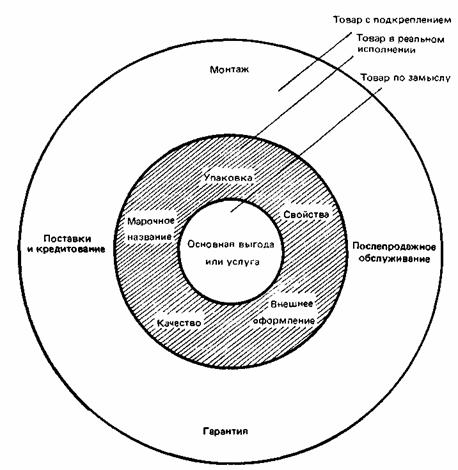home
 Marketing Marketing
 Basics of Marketing - Kotler Philip Basics of Marketing - Kotler Philip
|
Basics of Marketing - Kotler Philip
What is a product?
Tennis racket "Wilson", haircut "Vidal Sesson", concert "Rolling Stones", vacation tour of the club of medical students, two-ton truck with a trellised body, skis "Head" and telephone help desk are all goods. We define the product as follows:
A commodity is anything that can satisfy a need or need and is offered to the market in order to attract attention, purchase, use or consumption. These can be physical objects, services, persons, places, organizations and ideas.
At the same time, we should give the definition of the trade item:
A commodity unit is a separate integrity, characterized by indicators of magnitude, price, appearance and other attributes. For example, toothpaste is a commodity, and a tube of paste "Winter Fresh Jel" from Colgate, worth $ 1.29, is a commodity unit.
The goods on a plan, the goods in real execution, the goods with reinforcement
When creating a product, the developer needs to perceive the idea on three levels. The underlying level is the level of the product according to the plan, which gives an answer to the question: what will the buyer actually acquire? After all, in essence, any product is a package service for solving a problem. A woman who buys lipstick does not just get lip color. And this has long been realized, for example, by Charles Revson, head of Revlon, Inc., who once said: "At the factory, we make cosmetics. In the store we sell hope. " Theodore Levitt noted that "procurement agents do not purchase a quarter-inch-diameter drill, but holes of the same diameter." Well, and the outstanding seller Elmer Wheeler, perhaps, would say: "Do not sell beef steak, but its delicious pivoting in a pan." The task of the market leader is to reveal the needs hidden behind any commodity and to sell not the properties of this product, but the benefits from it. As can be seen from Fig. 49, the product according to the plan is the core of the concept of the commodity as a whole.
The developer has to turn the product into a product in real execution. Lipstick, computers, training seminars and candidates for political parties are all products in real execution. The product in real performance can have five characteristics: the quality level, the set of properties, the specific design, the brand name and the specific packaging.

Fig. 49. Three levels of goods
Finally, the developer can provide for the provision of additional services and benefits, which are combined with reinforcements. If you take the firm "Avon", then its goods with reinforcement includes the manifestation of personal attention to the customer, and delivery to the house, and a guarantee of a refund, etc. The success of IBM Corporation can also partly be explained by smart reinforcement of its goods in real performance - computers. While competitors were busy selling customers the properties of their products, IBM realized that customers are not interested in the machines themselves, but in the solution of their own problems. The consumer needed instructions, sets of working programs written on standard media, programming services, on-line repairs, guarantees, etc. In short, the corporation "IBM" sold not just a computer, but a whole set2.
The idea of reinforcing the goods forces the market leader to look at the customer's existing consumption system as a whole, "to how the buyer of the goods integrally approaches the problem he is trying to solve through the use of the product." With this approach, the market leader will reveal many opportunities to reinforce his product offer in the most effective way from the point of view of competition. According to Levitt,
Competition in a new way is not a competition between what is produced by firms in their plants and factories, but what they additionally provided their products in the form of packaging, services, advertising, consultations for customers, financing, delivery features, warehousing services And other things people appreciate. 4.
The firm must constantly look for effective ways of reinforcing its product offer.


Comments
When commenting on, remember that the content and tone of your message can hurt the feelings of real people, show respect and tolerance to your interlocutors even if you do not share their opinion, your behavior in the conditions of freedom of expression and anonymity provided by the Internet, changes Not only virtual, but also the real world. All comments are hidden from the index, spam is controlled.